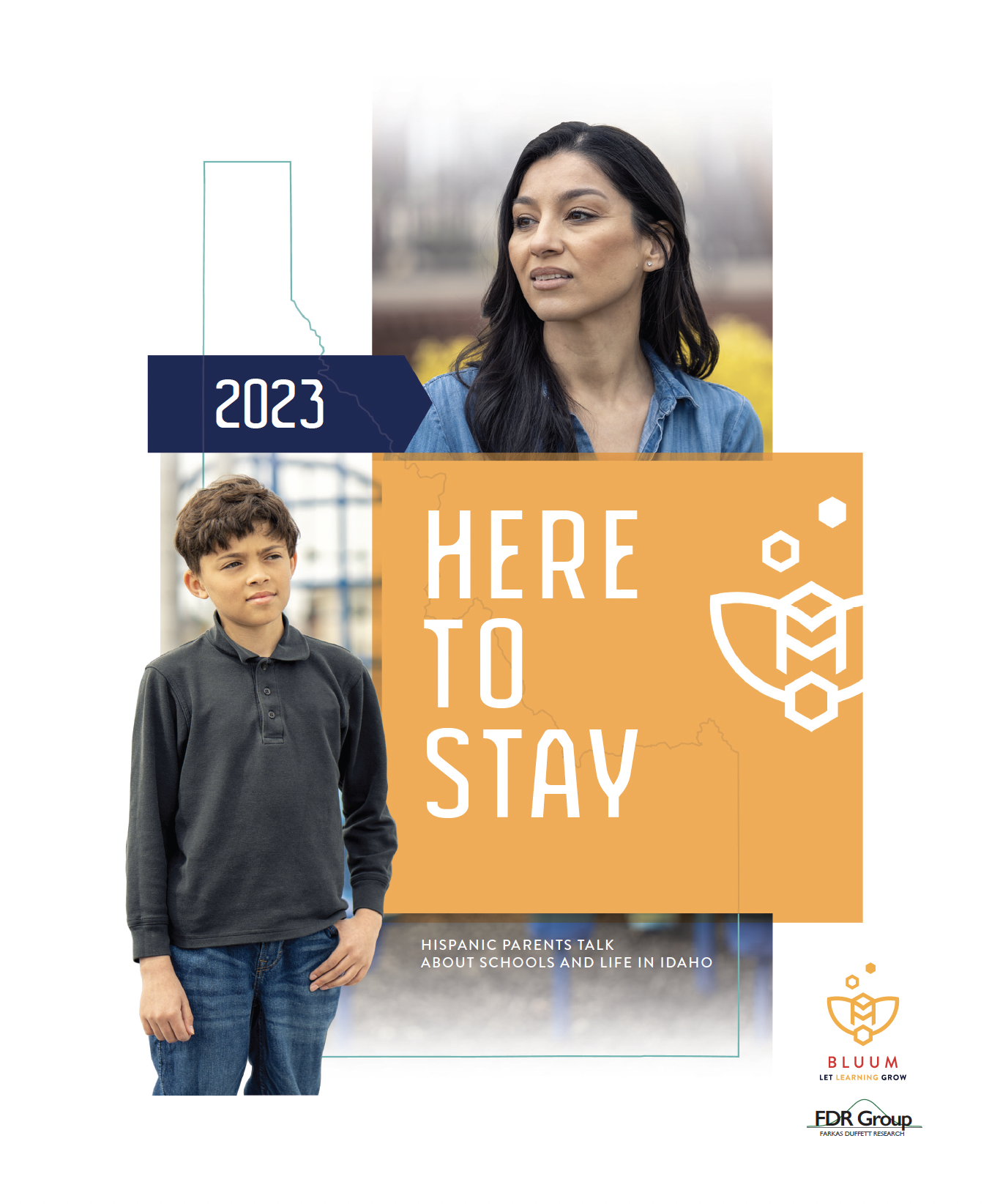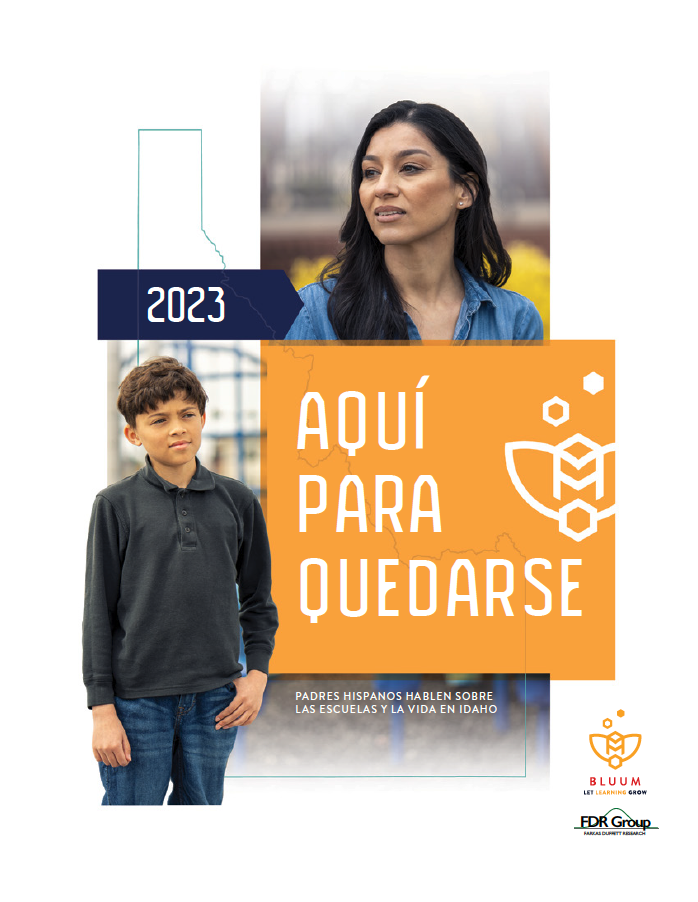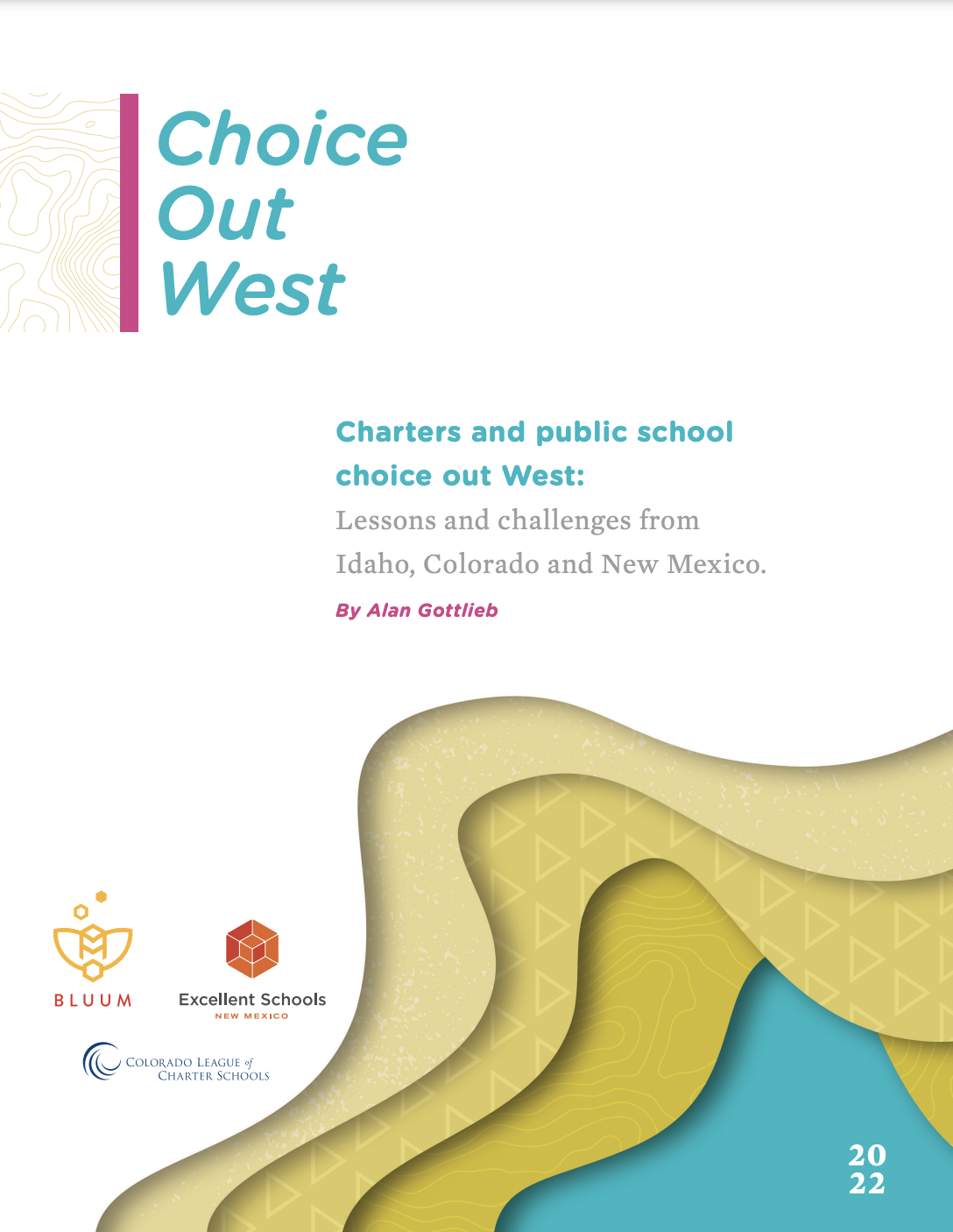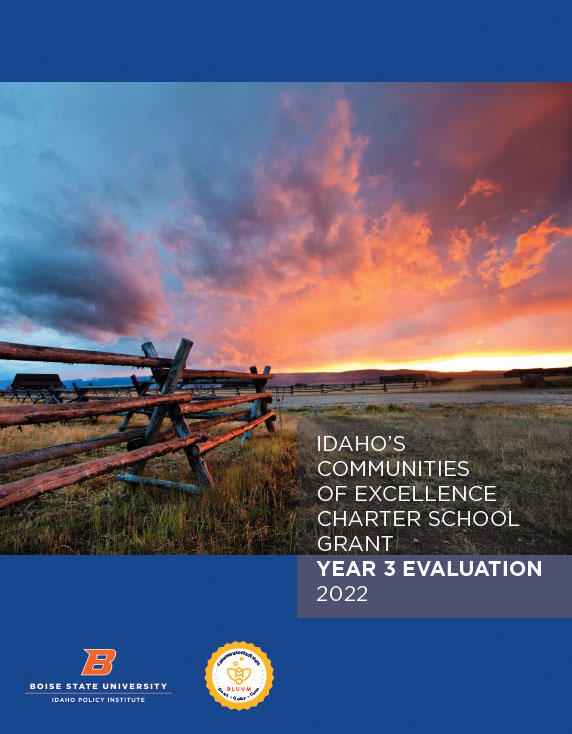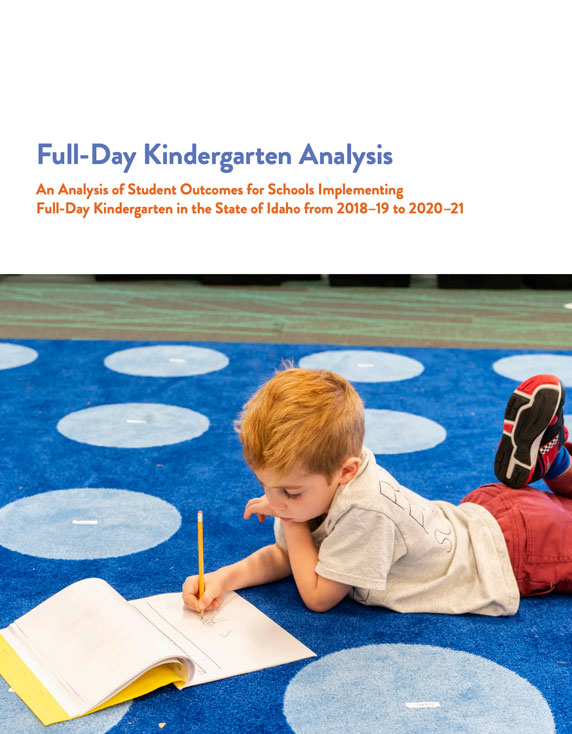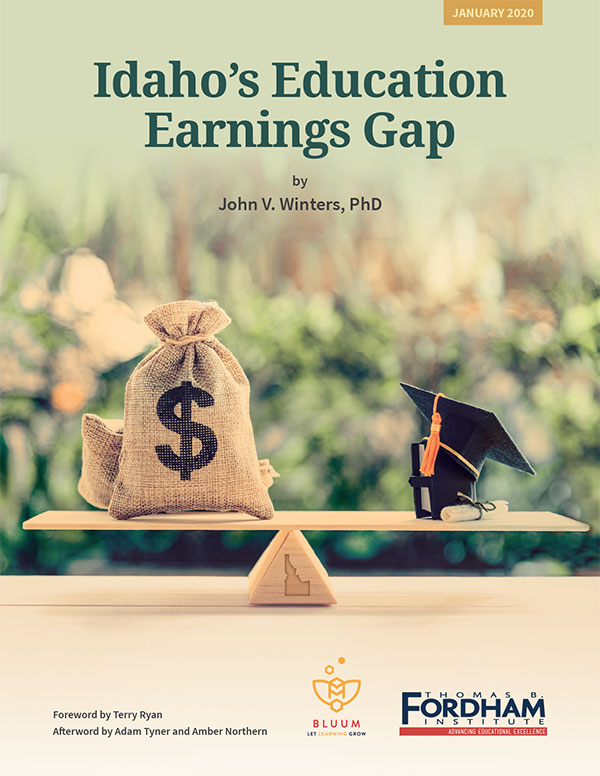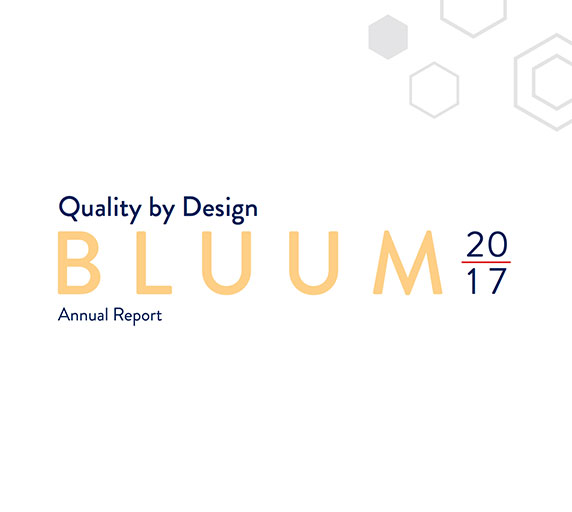Year 5 Evaluation – 2023
Prepared by the Idaho Policy Institute
In 2018, a consortium of leaders in Idaho education1 applied for a competitive Charter School Program (CSP) grant from the U.S. Department of Education (See Appendix A) to launch, replicate, and expand charter schools across the state. As a result, the Idaho Communities of Excellence (COE) consortium was awarded a $17.1 million CSP grant, which increased to $22.5 million in 2019. Over the grant’s five years, Idaho’s COE program will administer the majority of grant funding (90.0%) and technical assistance (~7.0%) to 26 Idaho public charter schools.
Since 2019, Bluum has distributed grant funds to 28 schools. Five schools in Spring 2019 (Cohort 1), six schools in Fall 2019 (Cohort 2), two schools in Spring 2020 (Cohort 3), two schools in Fall 2020 (Cohort 4), seven schools in Spring 2021 (Cohort 5), two schools in Summer 2022 (Cohort 6), and four schools in Winter 2023 (Cohort 7). This report evaluates the schools in each of these cohorts using student achievement and growth data, subgrantee school budgets and expense reports, and stakeholder engagement data.
Significant Disproportionality Under IDEA
Frequently Asked Questions
In partnership with Civil Rights Solutions, Bluum has put together an FAQ designed to help LEA’s – both charter schools and school districts – in Idaho better understand what it means to be flagged for significant disproportionality, how that determination is calculated, and what steps can be taken to rectify and prevent it.
Significant disproportionality is a complex topic under the Individuals with Disabilities Education Act (IDEA). The information offered here is largely drawn from the resources published by the Idaho Department of Education. The idea of this tool is to deepen understandings of significant disproportionality as well as assisting in practical day-to-day problem solving.
Five Years of Future
Celebrating a Public Charter School Success
As Future Public School marks its 5th anniversary, we reflect on the school’s journey and the formation of key partnerships. We dive into the deliberate efforts of the team to establish an intentional culture that withstood the challenges posed by COVID. Additionally, we explore the vision for the future.
We take immense pride in Idaho New School Fellow Amanda Cox and her team, celebrating all that they have accomplished throughout the years.
Idaho’s Communities of Excellence Charter School Grant
Year 4 Evaluation – 2023
Prepared by the Idaho Policy Institute
In 2018, a consortium of leaders in Idaho education1 in applied for a competitive Charter School Program (CSP) grant from the U.S. Department of Education (See Appendix A) to launch, replicate, and expand charter schools across the state. As a result, the Idaho Communities of Excellence (COE) consortium was awarded a $17.1 million CSP grant, which increased to $22.47 million in 2019. Over the grant’s five years, Idaho’s COE program will administer the majority of grant funding (90%) and technical assistance (~7%) to 26 Idaho public charter schools.
Since 2019, Bluum has distributed grant funds to 28 schools. Five schools in Spring 2019 (Cohort 1), six schools in Fall 2019 (Cohort 2), two schools in Spring 2020 (Cohort 3), two schools in Fall 2020 (Cohort 4), seven schools in Spring 2021 (Cohort 5), two schools in Summer 2022 (Cohort 6), and four schools in Winter 2023 (Cohort 7). This report evaluates the schools in each of these cohorts using student achievement and growth data, subgrantee school budgets and expense reports, and stakeholder engagement data.
Here to Stay
Hispanic Parents Talk About Schools & Life in Idaho
The success of Idaho’s Hispanic families is entwined with the success of the state—be it in the economic, social, or educational realm. The findings from this research study can help Idaho’s leaders better design policies in each of these areas. This study, Here to Stay, builds on the insights from a 2016 study, Hispanic Parents Speak Out, which was conducted on behalf of Bluum by the same research team.
One goal of this report is to give leaders an opportunity to “hear” Hispanic parents talk about their lives in Idaho, about their experiences with the public schools, and about the goals they have for their children. If we’ve done our job right in capturing their voices, then future policies and practices may do a better job of meeting the needs of Hispanic parents and children in Idaho.
Choice Out West
Lessons and Challenges from Idaho, Colorado and New Mexico
by Alan Gottlieb
A new multi-state report, “Choice Out West: Lessons and challenges from Idaho, Colorado and New Mexico,” finds that despite successful expansion and innovation efforts in Idaho’s charter school sector, our state’s rapid population growth is creating not only opportunities but complex challenges in providing quality public school choice seats for K-12 students.
The report builds on the 25+ years of experience of public charter schools in three Western States to report on what has and hasn’t worked in improving education for students and families. The report distills information gleaned from interviews with dozens of experts and data analysis across the three states which all have upwards of 10 percent of their public school students attending charter schools. The report was commissioned jointly by Bluum in Idaho, the Colorado League of Charter Schools and Excellent Schools New Mexico.
Building For Success in Idaho
Measuring How Well Idaho is Meeting Public Charter School Facility Needs
Idaho is one of the nation’s fastest growing states. Many of our schools are overcrowded, and our student demographics are changing rapidly. Over the past decade, our state’s overall K-12 enrollment has grown by about 55,000 students, almost 20 percent (10,422 students) of which has been in the state’s public charter schools. With all this growth in student enrollment, public schools in Idaho—both traditional school districts and charter schools—have struggled to keep up with the need for new and expanded school facilities.
To help illuminate the scale of the facility financing inequities in Idaho, and most importantly to offer up solutions, especially for public charter schools, Bluum partnered with the Foundation for Excellence in Education (ExcelinEd) to generate this policy brief, Building for Success in Idaho. To help illuminate the scale of the facility financing inequities in Idaho, and most importantly to offer up solutions to consider, especially for public charter schools, Bluum partnered with the Foundation for Excellence in Education, Inc. (ExcelinEd) to generate this policy brief, Building for Success in Idaho. One key takeaway from the brief is that because of the facility gap, “an average-sized charter school in Idaho must operate on average with nine fewer teachers, diverting funding intended for student instruction to pay for facilities.”
Because of a growing student population in our state, more schools are needed, and public charter schools can be a critical part of the solution. Doing more with less is noble in public education, but even more noble (and challenging) is doing it well—something that cash-strapped rural and high-need district schools know all too well.
It is our sincere hope that this research and interactive tool produced by our friends at ExcelinEd will provide data and information as Idaho’s lawmakers make decisions about how to best invest valuable state dollars to help Idaho build the new school seats necessary for our students and families.
Idaho’s Communities of Excellence Charter School Grant
Year 3 Evaluation – 2022
Prepared by the Idaho Policy Institute
In 2018, a consortium of leaders in education (Idaho Public Charter School Commission, Idaho State Board of Education and three non-profits, Bluum, the J.A. and Kathryn Albertson Family Foundation and Building Hope) came together to apply for a competitive Charter Schools Program (CSP) grant from the U.S. Department of Education (see Appendix A) to launch, replicate and expand charter schools across the state. As a result, the Idaho’s Communities of Excellence (COE) consortium was awarded a $17.1 million CSP grant. This award was increased to $22.5 million in 2019. Over the grant’s five years, Idaho’s COE program will administer the majority of grant funding (90%) and technical assistance to 20 Idaho public charter schools.
Since 2019, Bluum has distributed grant funds to 22 schools. Five schools in Spring 2019 (Cohort 1), six schools in Fall 2019 (Cohort 2), two schools in Spring 2020 (Cohort 3), two schools in Fall 2020 (Cohort 4), and seven schools in Spring 2021 (Cohort 5). This report evaluates the schools in each of these cohorts using student achievement and growth data, subgrantee school budgets and expense reports, and stakeholder engagement data.
Idaho Charter Market Analysis
Exploring Growth Opportunities for Idaho Charter Schools
Idaho faces a twin challenge in the market for public school students. First, the state needs higher-quality schools to give all its students access to great educational options. Despite the hard work of Idaho educators and many years of policy progress, Idaho students still struggle, with only 40 percent of students proficient in math and 55 percent in reading across all grades statewide, and only 29 percent of Idaho’s high schoolers are meeting college readiness benchmarks.
Second, Idaho simply needs more public school seats due to population growth. According to the 2020 U.S. Census, Idaho was the second-fastest-growing state over the past decade, with a 17.3 percent growth rate—adding more than 270,000 residents. From just July 2020 to July 2021, Idaho, the fastest-growing state over this time, saw its population grow by 2.9 percent,3 far outpacing the estimated U.S. rate of 0.1 percent. Residents of other states who made Idaho their new home accounted for an influx of nearly 49,000 residents during this time. This dramatic growth highlights an opportunity to explore the market for new, high-quality charter schools across Idaho.
Analysis: The Impact and Outcomes of Full-Day Kindergarten
Largest study of its kind in Idaho looks at impact of all-day-kindergarten on early years literacy
Bluum is a strong believer in the power of parent choice. We have put our resources and efforts behind that belief. In funding a voluntary all-day kindergarten pilot with 17 partner schools across Idaho, we have come to see that many parents value an all-day kindergarten option in their school of choice. And, what’s more, results from new statewide research, which includes all Idaho schools offering full-day kindergarten show children benefit academically in these programs.
Based on evidence from across the nation, all-day kindergarten is an important strategy for closing literacy gaps. We know from research that students who are not reading proficiently by the end of 3rd-grade are four times more likely to drop out or fail to graduate from high school. For poor, black, and Hispanic students, that likelihood doubles.[1]
All-day kindergarten, however, is not a magic bullet. But, it can be fundamental in setting the conditions for better learning outcomes if it is done in tandem with smart improvements to what happens for our children in first, second and third grades.
But what does Idaho’s early literacy data tell us? The expert research team at Public Impact in North Carolina helped tease out the answer. Public Impact, with support from the Idaho State Board of Education, accessed Idaho Reading Indicator (IRI) data from 2018-19 through 2020-21 to evaluate the effectiveness and impact of all-day kindergarten on our children’s literacy results.
Idaho’s Communities of Excellence Charter School Grant
Year 2 Evaluation – 2021
Prepared by the Idaho Policy Institute
In 2018, a consortium of leaders in education (Idaho Public Charter School Commission, Idaho State Board of Education and three non-profits, Bluum, the J.A. and Kathryn Albertson Family Foundation and Building Hope) came together to apply for a competitive Charter Schools Program (CSP) grant from the U.S. Department of Education (see Appendix A) to launch, replicate and expand charter schools across the state. As a result, the Idaho’s Communities of Excellence (COE) consortium was awarded a $17.1 million CSP grant. This award was increased to $22.5 million in 2019. Over the grant’s five years, Idaho’s COE program will administer the majority of grant funding (90%) and technical assistance to 20 Idaho public charter schools.
This evaluation of the second year of grant implementation is different from the year- one report due to the COVID-19 pandemic. While stakeholder engagement data and subgrantee school budgets and expense reports are analyzed, there is no performance data available to measure student achievement and growth (see Appendix B). This report evaluates subgrantee schools from Cohorts 1 and 2 using data from the 2019/20 school year. Cohort 1 schools received funding in spring 2020.
United We Stand
Charter School Educators Offer Competing Perspectives On Educating For Citizenship
by Alan Gottlieb, Foreword by Terry Ryan
“Good citizenship is when effective citizens do simple but powerful things on a daily basis that keeps our country strong and free.” – Benjamin Franklin
As a Boise-based education nonprofit committed to improving opportunities for Idaho’s families and young people Bluum cares deeply about what is taught in our schools, and how it is taught. There is great debate and much written recently on education and what our children should be taught about American history, American government and what it means to be a responsible citizen in 21st century America. This conversation, like much else in American society, is hotly debated and polarizing. See the New York Times’ 1619 Project and the 1776 Report, created by the President’s Advisory Commission, for evidence of the divide.
To better understand the opportunities and challenges of teaching history and civics in our politically charged times, and to highlight schools that are doing the work well, we commissioned veteran education journalist Alan Gottlieb to profile four charter school networks actively engaged in the battle to educate and develop American citizens. These schools have different approaches, and they offer a diversity of viewpoints. But, through this we hope there is in fact a better understanding of truth that emerges.
The Communities of Excellence Project
Charter School Facility Refinancing Guide & Toolkit
Prepared by the Charter School Facilities Center
In 2018, a consortium of partners came together around Idaho’s Communities of Excellence federal Charter School Program (CSP) grant to lead and accelerate the expansion of high-quality charter schools across the state. Bluum serves as project lead for the consortium and is joined in this work by the Idaho Public Charter School Commission, the Idaho State Board of Education, the J.A. and Kathryn Albertson Family Foundation and Building Hope.
As part of our shared commitment under the Communities of Excellence grant to provide “high quality technical assistance” and “share best practices” to CSP subgrantee schools, Bluum issued an RFP for a “first-class charter schools facilities refinancing guide.” The National Alliance for Public Charter Schools (National Alliance) Charter School Facility Center was awarded the competitive contract for the refinancing guide.
This peer-reviewed guide and toolkit, authored by Elise Balboni, will be a valuable asset for not only charter schools in Idaho, but other schools across the country that are in the process of financing or refinancing their charter school facilities. It is our sincere hope this guide will help schools maximize every dollar spent on facilities so they can spend more in the classroom with their students.
VIEW THE FULL SUITE OF RESOURCES HERE
Idaho’s Communities of Excellence Charter School Grant
Cohort 1 Baseline Evaluation 2020
Prepared by the Idaho Policy Institute
In 2018, a consortium of leaders in education (Idaho Public Charter School Commission, Idaho State Board of Education and three non-profits, Bluum, the J.A. and Kathryn Albertson Family Foundation and Building Hope) came together to apply for a competitive Charter Schools Program (CSP) grant from the U.S. Department of Education (see Appendix A) to launch, replicate and expand charter schools across the state. As a result, the Idaho’s Communities of Excellence (COE) consortium was awarded a $17.1 million CSP grant. This award was increased to $22.5 million in 2019. Over the grant’s five years, Idaho’s COE program will administer the majority of grant funding (90%) and technical assistance to 20 Idaho public charter schools.
This report serves as the baseline report for the first cohort of CSP subgrantees and uses data from the 2018/19 school year. The first cohort consists of five charter schools (see Table 1). One of the objectives of the COE project is to ensure educationally disadvantaged and rural students are represented in the subgrantee schools. Table 1 includes demographic data for subgrantee schools, all Idaho schools and all charter schools in Idaho to act as a baseline for measuring future progress toward this goal.
Idaho’s Education Earnings Gap
Research & Recommendations by the Thomas B. Fordham Institute
“Education pays.” This well-worn adage certainly applies to Idaho. According to Professor Winters in this new report by the Thomas B. Fordham Institute, the mean earnings differential between an Idahoan with just a high school diploma and one with a bachelor’s degree is about $32,000 a year. This disparity is even greater for residents of the Boise metro area,where workers holding just a high school diploma earn $37,780 less per year on average than college graduates.
This report provides a series of recommendations for improving alignment between K-12 education and employment. The effort to make the high school diploma more valuable to employers is critical for our high school students who won’t “go on” to post-secondary education. Professor Winters and the Fordham Institute have done a nice job of highlighting the challenge. Importantly, they have also provided concrete proposals and policies being utilized in other states to better connect high school work to well-paying employment.
Charter School Performance in Idaho 2019
Stanford University’s Center for Research on Education Outcomes (CREDO), studied Idaho state charter students’ performance over three years, beginning with the 2014-2015 school year and ending with the 2016-2017 school year. The report found that on average, students in Idaho charter schools experience similar learning gains in math and stronger learning gains in reading compared to their traditional public school student (TPS) peer. Perhaps the greatest benefit is for students in rural charters. Those children outperform their traditional public school peers by 30 days of learning in reading and 59 days in math.
However, the report also reveals that charter schools in Idaho do little to close achievement gaps among various student subgroups. It is important to note that charters also do not increase these achievement gaps. This is true for Hispanic students, who fall behind their white peers by equal measures in both traditional district schools and public charters.
Charter students in poverty have a 30-day deficit in reading and a 47-day deficit in math, while their district peers have a deficit of 47 days in both reading and math. These same trends hold for English learners and students in special education. Also Bad is that 17 percent of charter schools have results that are significantly worse than those of their district peers in reading and 20 percent are under-performing in math.
CREDO also reveals that online charter school students in Idaho on average gain less over a year than do students who attend brick-and-mortar charter schools. Online charter students are behind by 47 days of learning in reading and 77 days in math.
Bluum sees these results as the baseline for our work implementing Idaho’s Communities of Excellence $17 million federal Charter School Program grant. In that grant, we promised to “increase the number of quality charter school seats by 8,200 students, especially for our most educationally disadvantaged and rural students, through start-up, replication and expansion.” In practice, this means that in five years’ time, we expect to see positive performance impacts among charters for some of our most disadvantaged students.
Meeting the Potential of a Virtual Education
When the first virtual school began more than 20 years ago, it offered an incredible promise: Suddenly, students could get access to a great education and a diversity of courses regardless of place or time. They could have flexibility to “attend” school around medical appointments, sports practices, or whatever else life threw at them.
And outside of schoolhouse walls, students could have a more personalized learning experience, pursuing their interests and speeding up or slowing down as needed. According to the data, however, virtual schools have largely fallen short of this promise. In 2015, for example, Stanford University’s Center for Research on Education Outcomes (CREDO) conducted a study of 200 online charter schools. It found that, on average, the students enrolled at those schools lost 180 days of learning in math and 72 days of learning in reading compared to similar students in traditional brick-and-mortar schools.2 In other words, over the course of an academic year, online charter students effectively made no progress in math, and just slightly more than half as much progress in reading as their peers in traditional settings.
Given all this, it may seem time to give up on the virtual school experiment. But after more than two decades, we have developed a strong sense of the challenges that virtual operators face, as well as strategies to address those challenges. Moreover, a handful of online schools are demonstrating that success is possible. This report draws on the experience of two virtual charter schools that are making online schooling work for their students—Idaho Distance Education Academy and New Hampshire’s Virtual Learning Academy Charter School.
Fairness in Facilities
Why Idaho Public Charter Schools Need More Facilities Funding
To document the financial challenges facing Idaho public charter schools, and to help us find ways to improve how charters finance facilities in the Gem State, we engaged the research team at Bellwether Education Partners. In 2016, Bellwether issued Building Excellence: How Helping Charters Access Facilities Can Improve Opportunity for Idaho Kids. In that report, the crack research team at Bellwether surveyed 26 of the state’s brick and mortar charter school leaders (which represented about 65 percent of the charters in Idaho), and fully half of the respondents “agreed or strongly agreed that they had to make ‘substantial compromises to what we wanted’ when securing a facility for their school.”
Fast forward to 2018, and charter schools are still making compromises and struggling to finance facilities. But how, exactly, do public charter school construction projects compare to district construction projects? What decisions and trade-offs do charter leaders make? How can policymakers equalize access to facilities funding for all public schools?
In their new report, Fairness in Facilities: Why Idaho Public Charter Schools Need More Facilities Funding, Bellwether sheds light on these questions.
Shackled Education Pioneers
Idaho’s Public Charter Schools at 20
As Idaho marks 20 years since the first charter schools opened in the Gem State in 1998 it is worth looking back at how the public charter movement started here. That’s the primary purpose of this report. But, as one revisits the history of Idaho’s public charter school program it is helpful to note how the effort has strayed from its original intent of allowing significant space for education innovation.
When launched back in 1998 the legislative intent of the state’s charter school program was “to serve as learning laboratories with hope that successes could potentially be applied throughout the larger public education system.”1 But, like in other states, the political compromises required to pass the original charter law minimized the actual space for innovation. Worse, Idaho’s charter law has been modified almost annually and many of these changes have reduced even further the ability of public charters to really operate much differently from traditional public schools.
After 20 years of effort, it is time to revisit the big ideas behind charter schools in Idaho. How can we return to the charter idea of accountability for performance in exchange for true operational flexibilities and the right to be different in uses of money, time, technology and non-certified staffing? Idaho’s system of education needs this engine of reform, and the state’s families and children want it.
Quality By Design
Bluum 2017 Annual Report
We care deeply about helping create and support high-quality schools across Idaho. It doesn’t matter to us whether they’re private, charter public, or district innovation. We are committed to what we call the ‘20 in 10’ strategy; creating 20,000 new high-performing Idaho school seats in 10 years (2024).This is why we seek out, vet, and support innovative leaders and high-performing school models; ‘20 in 10’ schools are quality by design. Quality is our focus, because quality is what counts. In other words, Bluum is governance-neutral. We support promising models with technical assistance, grant funding, talent recruitment and development, help securing a facility – anything it takes to provide more Idaho children with a world-class education.
This report is a way to provide public accountability for what we are doing, to document the lessons learned, and to highlight and share some of the issues and concerns that we, in partnership with the schools, seek to address in coming months and years.
Parents’ Guide
To School & Learning Options in Idaho
We’ve had the extraordinary opportunity to visit many schools across the Gem State – public district, public magnet, public charter, alternative, private, parochial and online. No matter the school type or the location, one common theme we’ve found in every school is parents who want the very bets opportunities for their children.
We’ve created this Parents’ Guide to empower parents! We want to provide a resource that defines your options and offers ideas for how best to take advantage of these for your child(ren). We believe that providing information about Idaho’ many – and growing – learning options can help parents make better choices for their families.
Guía de Padres
Para las Opciones de Escuela y Aprendizaje en Idaho
Hemos tenido la oporunidad extraordinaria de visitar muchas escuelas por todo el Estado Gem – distrito público, magnetico público, chárter público, alternativa, privada, parroquial y por internet (online). No obstante el tipo de escuela o el sitio, un tema común pue encontramos en cada escuela son los padres que quieren las mejores oporunidades para sus hijos.
Hemos creado este Guía de Padres para ¡empoderar a los padres! Queremos proveer un recurso que define sus opciones y les ofrece ideas de cómo mejor tomar venaja de éstas para su(s) hijo(s). Creemos que al proveer información de las muchas – y cada vez mayor – opciones de aprendizaje en Idaho puede ayudarles a los padres elegir mejor para sus familias
Building Excellence
How Helping Charters Access Facilities Can Improve Opportunity for Idaho Kids
Finding appropriate instructional space is a perennial challenge for schools of choice which – unlike public district schools – do not have access to public bond markets or public tax levies. Affordable facilities are a serious inhibitor to the growth of the state’s charter public schools, especially start-up charter schools that might bring different programs and learning opportunities to Idaho’s children and families.
This is especially frustrating for three reasons. First, Idaho’s brick-and-mortar charter schools work. On 2015-16 state achievement tests five of the state’s top 15 public schools are charters, while the top three schools in mathematics were all charters. Second, there are more than 6,000 Idaho Children on charter school waitlists. Third, the National Center for Education Statistics projects that Idaho will add upwards of 22, 000 new pre-k-12 students by fall 2022. Charter public schools can help add new high-quality seats for the state’s growing number of new students.
Hispanic Parents Speak Out
Reflections from a series of focus groups with Hispanic parents in Idaho conducted for Bluum
Hispanic students are among Idaho’s fastest growing demographic groups, making up 17.7% of enrolled public K-12 students today. Even more, enrollment of Hispanic school-age children is projected to grow another 11.7% by 2019. This demographic shift makes it imperative that Idaho;s schools learn to fully engage theses students and their families in high-quality educational opportunities, especially if we are to ensure that theses students are able to contribute to the future of Idaho’s social and economic development. Idaho’s Hispanic families offer valuable insights that can benefit the work of schools throughout the state, whether they be private parochial, or public.
Treasure in the Valley
Demographic Changes and New School Opportunities in Ada and Canyon Counties
Idaho’s families and student demographics are changing. Not only is the state’s total population growing (Idaho is the 10th fastest growing state), but Gem State families are increasingly urban, non-white and lower income. This was the big takeaway from the 2013 ECONorthwest report Shifting Sands: Idaho’s Changing Student Demographics and What it Means for Idaho. That report confirmed what many of us who work in communities like Boise, Meridian, Twin Falls, Idaho Falls or Coeur d’ Alene see daily as we pass new home construction sites, hunt for apartments, sit in traffic and watch new school buildings pop up like wild flowers.
Additional Publications
A quality authorizer can serve as a change agent, a market maker, and a force for quality in public education. Quality authorizing can serve as a quality control check for the charter schools sector and provide lawmakers with the confidence that someone is watching the store and ensuring excellence.
Idaho’s public schools receive revenue from state, local, and federal sources. This brief focuses on the allocation of state funds for public education, which comprise the largest source of funds for Idaho’s public schools at over 60 percent.
The purpose of this study is to better understand future opportunities for charter schools to meet the changing educational needs of students throughout the Gem State. While the report is intended to support strategic planning for the future growth of Idaho’s charter sector, much of the information contained herein is relevant to broader purposes.






